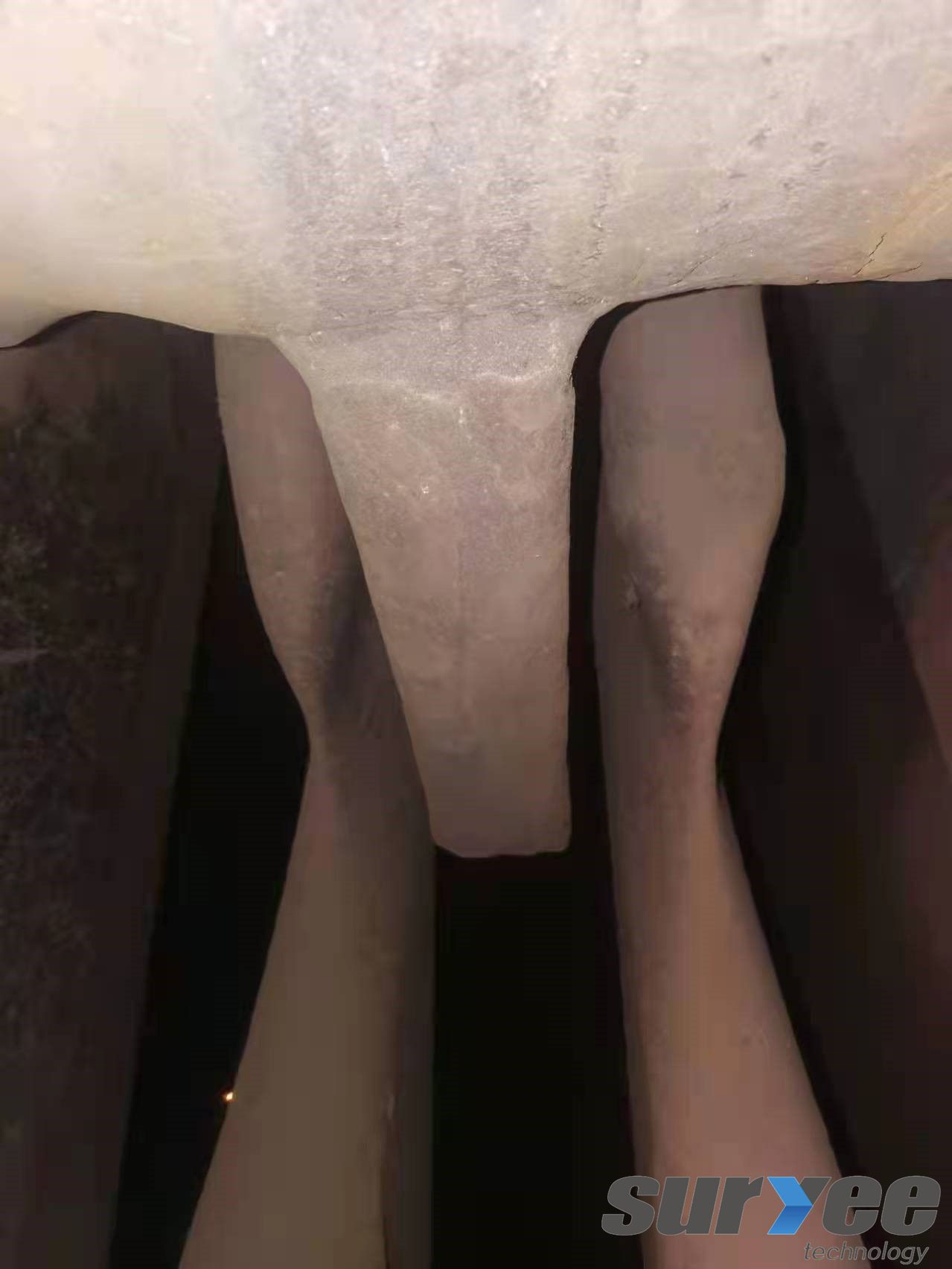2020 官网升级中!现在您访问官网的浏览器设备分辨率宽度低于1280px
请使用高分辨率宽度访问。
The single tooth roller crusher is one of the key equipment in sintering production. It uses the squeezing friction between the single tooth roller teeth and the grate plate to crush the sintered iron ore, thereby making its particle size meet the process requirements. The teeth of a single toothed roller work continuously under medium impact strength abrasive wear conditions, and its harsh working environment requires the teeth of a single toothed roller to have good high-temperature and wear-resistant performance. In the past, high chromium cast rods with wear-resistant properties were deposited on the surface of the teeth. Generally, the teeth of a single toothed roller wear severely after 8 months of use and need to be repaired offline. However, the sintering production line is a continuous production line that requires a single toothed roller cycle life of one year. Therefore, in order to meet the needs of production cycle and extend its service life, Beijing Saiyi has studied a wear-resistant material for overlay welding on the surface of single tooth rollers.
The single roll crusher is an important component of the sintering system in steel mills and ironworks, with the main working part being the hammer head. The hammer head includes two parts: the hammer handle and the hammer body. The hammer handle mainly plays a supporting role, while the hammer body is mainly used to crush sintered ore. The service life of the hammer head mainly depends on the lifespan of the hammer body. During work, the shear effect formed by the hammer head and the lower side grate plate breaks the sintered ore that is still at a high temperature of 750-850 ℃ when unloaded from the tail of the sintering machine. Therefore, it is required that the hammer head, especially the hammer body, should be resistant to high temperature and wear resistance.
Coal gangue contains a large amount of SiO2 and Al2O3, with a hardness greater than 2500HV. The commonly used wear-resistant metal materials are mainly high chromium alloys, with a microhardness of only 1200HV, far lower than the material hardness. Related studies have also pointed out that abrasive wear is not only determined by the hardness of the material, but more importantly by the ratio of material hardness to the hardness of the abrasive particles in the abrasive. When the ratio is less than 0.8, wear enters the high wear zone. In addition, at a high temperature of 850 ℃, the hardness of the high chromium alloy decreased from 58HRC at room temperature to 45HRC, and the wear resistance decreased by more than 30%.
How to improve the material hardness and the hardness of the single tooth roller crown at high temperatures has become the key to improving the wear resistance of single tooth rollers. At present, the commonly used single tooth roller overlay welding wear-resistant materials are mainly high chromium overlay welding alloys, namely Fe Cr C alloy series, which rely on the Cr7C3 formed in the overlay welding layer as a wear-resistant hard phase to resist wear. However, the microhardness of Cr7C3 is only 1100~1300HV, which is much lower than the microhardness of SiO2 and Al3O2. The wear is still severe and the usage effect is not ideal.
The single tooth roller crusher is an important equipment in the sintering process, and its service life is related to the productivity of the entire sintering production. The maintenance workload and cost of the guide groove are large, therefore, improving its service life is of great significance. The single tooth roller crusher was modified with KB998 wear-resistant welding wire, and after improvement, the use effect is good. So far, there has been no more leakage or weld cracking, and the water-cooled beam only needs to be replaced once a year. The equipment's failure time has been reduced to zero, stabilizing production and creating an annual benefit of about 1.2 million yuan, achieving the expected goal.


